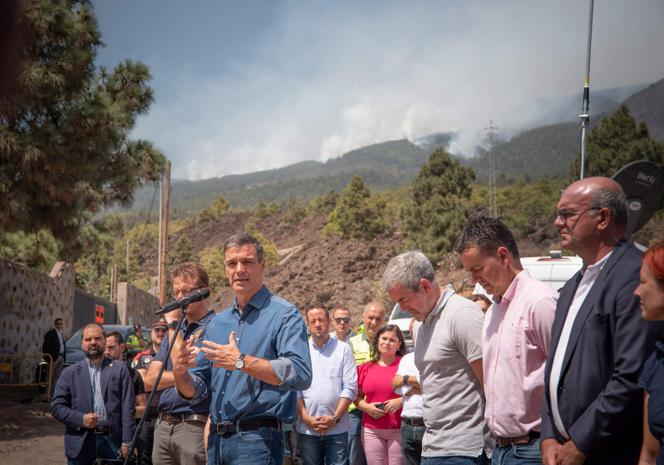


The wildfires that have been ravaging the Spanish island of Tenerife for a week are still not under control, but "the worst is over," said the President of the Canary Islands, Fernando Clavijo, on Monday, August 21. "Let's hope that the weather will help us, so that we can definitively consider the fire stabilized in the next few hours, the next few days," said the outgoing Socialist Prime Minister, Pedro Sanchez, during a brief visit to the area on Monday.
The next few hours are going to be "very important," he stressed in his short address to the press, as forecasts point to a difficult night with wind and rising temperatures. A fourth heat wave is expected to sweep across Spain this week. The Spanish meteorological service said temperatures would gradually rise to 40°C in some parts of the country on Wednesday and Thursday. In Tenerife, the agency is forecasting average maximum temperatures of 30°C.
"We are concentrating our efforts on two fronts, particularly in the southeast, which is very difficult to access, with its ravines and steep cliffs," Victoria Palma, technical advisor to the "Cabildo" (Tenerife government), explained on television, describing an "unprecedented fire that has spread very quickly since the beginning, due to successive heat waves." More than 400 firefighters and security personnel have been mobilized to fight the flames.
This fire is considered to be the biggest ever to hit the archipelago. The fire, which broke out on Tuesday, August 15, in a mountainous region in the northeast of the island, has already devoured more than 14,800 hectares over a perimeter of almost 90 km, or around 7.3% of the island's surface area, and forced more than 13,000 people to flee. It is of a "scale and power we have never faced before,"in Clavijo's words.
On Saturday, the head of the forestry services, Pedro Martinez, reported that, despite the scale of the blaze and thanks to the intervention of the fire department, no injuries had yet been reported and no houses had burnt down so far – "a real miracle," said the regional president.
On Sunday night, the Emergency Military Unit (UME), the Forest Fire Reinforcement Brigades (BRI) and regional intervention teams concentrated their efforts on the southern sector – more precisely, between the towns of Arafo and Candelaria, where a line of defense was set up to protect the Teide Observatory area, home to the telescopes of the Canary Islands Astrophysics Institute. Residents of both communities were able to return to their homes on Monday morning.
You have 41.11% of this article left to read. The rest is for subscribers only.
